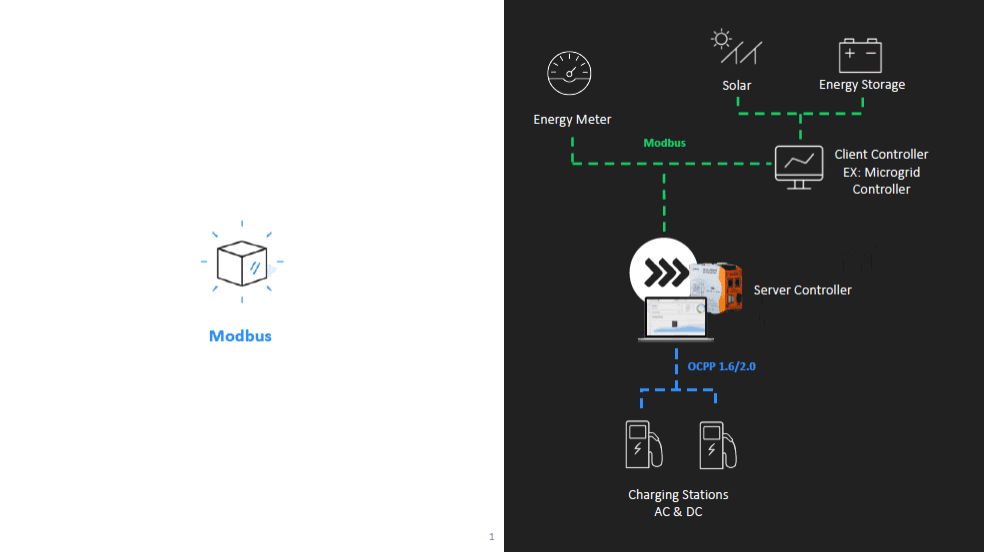As electric fleet size increases, more and more transits are looking at their existing grid interconnection and realizing that they just don’t have enough electrical power. This is also coming at a time when utility supply chains are constrained, and the system is having problems coping with additional load growth in general. Therefore, transit fleets are seeing the increasing need for microgrids that incorporate charging energy management.
This strategy is best suited for transit fleets whose existing grid interconnection can’t support their projected load, are under a time pressure to electrify, prioritize resiliency and need to bring the cost of electric operations to closely match or beat their existing expenditures.
What is a microgrid?
A microgrid is defined as a set of loads and energy resources, including different forms of generation, that are all controllable and have a defined boundary. This means you can easily define what is in the microgrid and what is not.
What is charging and energy management?
Charging and energy management is a type of load management that controls electric vehicle charging. The Mobility House’s industry leading charging and energy management technology solution, ChargePilot®, which currently operates over 1,000 electric vehicle fleets worldwide.
When combined, the charging energy management system makes the vehicle chargers into an intelligent, controllable load that can be supplied with power via generation or storage included in the microgrid, reducing the need for a larger utility grid interconnection. The charging energy management system helps save electricity costs and can also help with other key features such as interoperability of different types of chargers, data reporting, and monitoring.
How does a charging and energy management system work with a microgrid?
The underlying technology that allows the charge management system to communicate with the microgrid is called Modbus. Modbus is a communications protocol that is designed specifically for Programmable Logic Controllers (PLCs). It was invented in 1979 by a company called Modicon, that subsequently became a part of Schneider Electric. Microgrid controllers and the other assets in a microgrid often either are PLCs or have them incorporated. The ChargePilot local controller is also a PLC, and therefore Modbus is the perfect technology to facilitate communication between the chargers and the microgrid.
Modbus is a command-and-control protocol, where one controller gives directions, and the others follow the directions. The controller that gives the directions is called the client and the others are called the servers. Modbus is a serial protocol, meaning each piece of information is sent one at a time, which makes it a less complex language. This simplicity allows it to run on a PLC, which would generally have far less computing power than something like your cellphone. Given how long Modbus has been around, it is considered a mature technology with many engineers having knowledge of how to implement various solutions using this protocol. It is also an open language that is royalty free to use, further contributing to ease of implementation.
The Mobility House is using Modbus to facilitate communication between charging management and the microgrid at the Brookville Smart Energy Bus Depot in Montgomery County Maryland. There we partnered with Alphastruxure, an Energy as a Service (EaaS) provider that designs, builds, owns, operates, and maintains tailored energy infrastructure, including microgrids, and Schneider Electric, which incidentally is the company that originally invented Modbus, to help Montgomery County grow their zero-emission transit fleet to 70 electric buses.
The 6.5 MW microgrid features 1.6 MW of solar PV, three 633 kW generators and 3 MW of battery storage to support 50 percent of the Brookville bus fleet. Charging from its onsite power supply gives the County freedom to “island” from the grid, which not only ensures continuous fleet operation in the event of grid failures, but also the limitations of coordinating bus charging schedules around utility time-of-use rates. The communication between ChargePilot and the microgrid controller is facilitated by Modbus. This project demonstrates how this proven technology can be partnered with ChargePilot to power cutting edge transit solutions.

